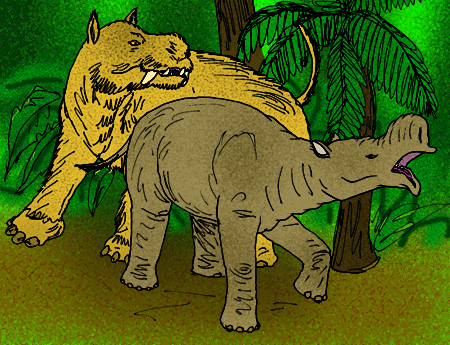Coryphodontidae on:
[Wikipedia]
[Google]
[Amazon]
Coryphodontidae is an extinct family of  The type genus '' Coryphodon'' is known from around the Paleocene-Eocene transition in Europe, western United States, northern Canada, and eastern Asia. The remaining genera are known exclusively from the middle Eocene of Asia.
The coryphodontids are related to the pantolambdids. ''Coryphodon'' are large, derived pantodonts first described in the mid-19th century, but no intermediate stages leading to their unusual upper molars are known.
The last known species of ''Coryphodon'' have
The type genus '' Coryphodon'' is known from around the Paleocene-Eocene transition in Europe, western United States, northern Canada, and eastern Asia. The remaining genera are known exclusively from the middle Eocene of Asia.
The coryphodontids are related to the pantolambdids. ''Coryphodon'' are large, derived pantodonts first described in the mid-19th century, but no intermediate stages leading to their unusual upper molars are known.
The last known species of ''Coryphodon'' have
pantodont
Pantodonta is an extinct suborder (or, according to some, an order) of eutherian mammals. These herbivorous mammals were one of the first groups of large mammals to evolve (around 66 million years ago) after the end of the Cretaceous. The la ...
mammals known from the Late Paleocene
The Thanetian is, in the International Commission on Stratigraphy, ICS Geologic timescale, the latest age (geology), age or uppermost stage (stratigraphy), stratigraphic stage of the Paleocene epoch (geology), Epoch or series (stratigraphy), Serie ...
to the Middle Eocene
The Eocene ( ) is a geological epoch that lasted from about 56 to 33.9 million years ago (Ma). It is the second epoch of the Paleogene Period in the modern Cenozoic Era. The name ''Eocene'' comes from the Ancient Greek (''Ēṓs'', ' Dawn') a ...
of Eurasia and North America.
 The type genus '' Coryphodon'' is known from around the Paleocene-Eocene transition in Europe, western United States, northern Canada, and eastern Asia. The remaining genera are known exclusively from the middle Eocene of Asia.
The coryphodontids are related to the pantolambdids. ''Coryphodon'' are large, derived pantodonts first described in the mid-19th century, but no intermediate stages leading to their unusual upper molars are known.
The last known species of ''Coryphodon'' have
The type genus '' Coryphodon'' is known from around the Paleocene-Eocene transition in Europe, western United States, northern Canada, and eastern Asia. The remaining genera are known exclusively from the middle Eocene of Asia.
The coryphodontids are related to the pantolambdids. ''Coryphodon'' are large, derived pantodonts first described in the mid-19th century, but no intermediate stages leading to their unusual upper molars are known.
The last known species of ''Coryphodon'' have bilophodont
The molars or molar teeth are large, flat teeth at the back of the mouth. They are more developed in mammals. They are used primarily to grind food during chewing. The name ''molar'' derives from Latin, ''molaris dens'', meaning "millstone toot ...
molars similar to later, more derived coryphodontids, and, most likely, ''Coryphodon'' is the primitive sister taxon to the remaining genera and the entire lineage (or lineages) originated from within this genus.
Two coryphodontids considerably larger than ''Coryphodon'' but endemic to China, '' Asiocoryphodon'' and '' Heterocoryphodon'', have more advanced bilophodont dentition.
'' Metacoryphodon'' is morphologically transitional between ''Coryphodon'' and ''Eudinoceras''.
Paleobiology
Corypohodontids were slow-growing and long-living animals, and studies of a large sample of individuals from a single locality, assumed to be from the same population, suggest that coryphodontids had a polygynous social structure in which males and females reached sexual maturity at different ages. Histological study of molar enamel samples of '' Heterocoryphodon flerowi'' and '' Eudinoceras mongoliensis'' show that their life histories were comparable to those of '' Hippopotamus amphibius'' and '' Ceratotherium simum'', respectively. '' Asiocoryphodon conicus'' lived shorter and grew faster than hippopotamus.Notes
References
* * * * * * * * * * * * * * {{Taxonbar, from=Q15728803 Pantodonta Paleocene first appearances Eocene extinctions Prehistoric mammal families